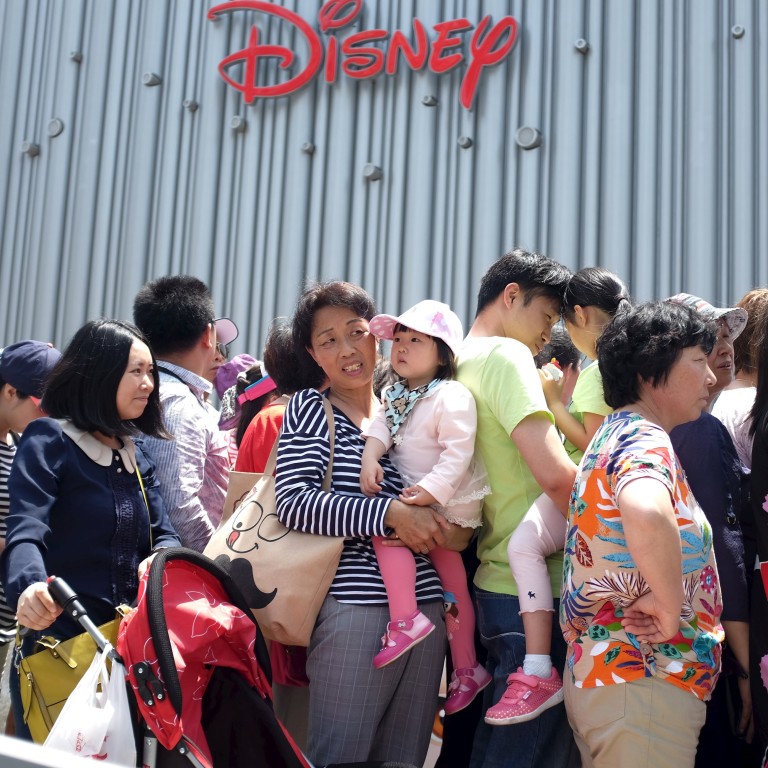
Will Shanghai Disneyland lead the charge for Asian theme parks?
Dan Steinbock says the long lines at its newly opened store underline the lucrative promise of the emerging Chinese market, and herald the Asianisation of Disney
As the construction of the US$5.4 billion Shanghai Disney theme park entered the last mile, Disney's largest flagship store worldwide was opened, with a line seemingly more than a mile long.
Disney's arrival in the city's Pudong financial district reflects not only China's rising level of prosperity; it also heralds the Asianisation of Disney and the global theme park industry.
There was a time when English was enough for Mickey. As Disney's little mouse began to travel, the language studies began; first French, then Japanese. That's no longer enough. After Cantonese and varieties of Malay, Mickey is busy learning Putonghua - and that will transform Disney itself.
In the postwar era, the theme park industry was mainly American. Since the 1980s, it has expanded in the advanced economies. Today, more than a third of the top 25 parks worldwide are in Asia.
Even before the global crisis, the industry generated US$25 billion in revenues from more than 550 million people across the world. With the rise of Asia, the region is beginning to pull head of North America in the global amusement/theme park business.
Among the theme park groups, Disney is still sovereign. It generates about a third of all global theme park revenues and as much as its three closest rivals together, including the UK-based Merlin Entertainments, Universal Studios in the US, and the Spain-based Parques Reunidos. In the top 25 list, Disney parks dominate the rankings, with Magic Kingdom in Florida topping the list.
Within Asia, interest is increasing in building a wide variety of theme parks, heralding a trend towards large, enclosed projects in many cities in China and Southeast Asia.
Until recently, the proportion of tourists to residents was about 70/30 at Hong Kong Disney and Ocean Park Hong Kong. But in Southern California, more than half the visitors to the Disney and Universal parks come from resident markets. Over time, regionalisation reigns.
That should be a wake-up call for Hong Kong, where an estimated 65-80 per cent of the tourists have been mainland Chinese. As regional competition intensifies, mainland tourists will expect more, new and different attractions in Hong Kong parks.
Today, a significant proportion of Asian tourists still prefer to travel in groups. Consequently, tourists account for a significant number of theme park visits, especially as the market is far from at saturation point.
Since 2011, Disney and Shanghai Shendi have been constructing the Disney resort in the Pudong district, which will be located on 400 hectares and will include the Shanghai Disneyland theme park; two themed hotels with a total of 1,220 rooms; and a retail, dining and entertainment complex.
At Disney, all eyes are on the mainland Chinese tourists, and for good reason. In the early 2010s, two China-based theme park chains, OCT Group and Haichang Group, entered the top 10 global theme park chains with 26 million and 10 million visits respectively.
Today, Shanghai is the most important influence in Asian theme park development. It is expected to have a major impact on raising the bar for quality, guest experience, and setting a price premium in the market.
In the past, Disney was an American company offering universal characters. It is growing into a universal company offering global products, but with increasingly local characteristics. It is time for Mickey's language studies to be complemented with lessons of multicultural etiquette.

